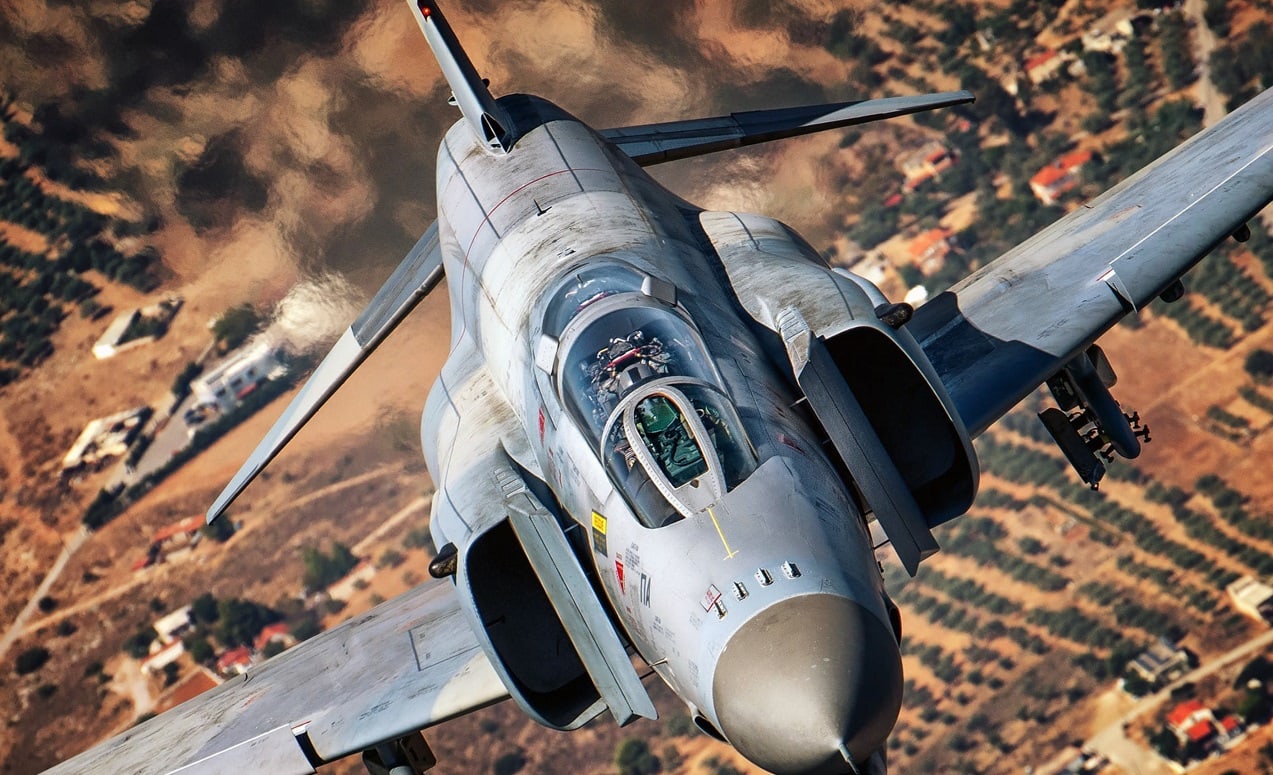The Vietnam War saw some of the most intense air combat of the 20th century – with over 1,737 fixed U.S. warplanes destroyed.
While fewer planes took to the skies than in previous conflicts, their size and speed made for close engagements. F-4s and other fighters of the U.S. Air Force, Navy, and Marine Corps, tangled with Vietnamese People’s Air Force (VPAF) MiGs in high stakes aerial dogfighting. While both sides now claim favorable kill/loss ratios – their aircraft downed more enemies than they lost – the early years of the air war were decidedly lopsided in favor of the VPAF. This was due in large part to the restrictive Rules of Engagement (ROEs) imposed on American aircrews as they conducted Operation Rolling Thunder, the initial bombing campaign of North Vietnam.
ROEs:
Most modern militaries use some form of ROEs to attempt to govern combat, particularly in peacekeeping, police actions, or limited low intensity conflicts. These ROEs are often designed to prevent the situation from escalating or to reduce civilian casualties and damage to infrastructure.
In Vietnam, it was hoped that the ROEs would allow the U.S. to gradually increase the pressure on North Vietnam without fully committing to a large-scale conflict. Further, there were concerns that a large, sustained, air campaign would both erode public support at home as well as convince Communist superpowers – China and Russia – to take a more active role in supporting North Vietnam.
Targeting in Vietnam War:
The first restriction placed on aviators was targeting. One would expect military leadership to take an active role in deciding what facilities or infrastructure to target to deal the most damage to the enemy, however, in the first years of Rolling Thunder, much of the targeting was decided by civilian leadership.
The often piecemeal nature of the targeting combined with the gradual advancement of the bombing campaign up from the South Vietnamese border meant that the North Vietnamese could either move the targets or establish strong defenses before American aircraft arrived to attack them.
In addition to specifying what could be struck, leadership in Washington also imposed geographical restrictions on aircrews. The cities of Hanoi and Haiphong were restricted airspace as well as anything within 25 miles of the Chinese border. These restrictions created safe havens for Vietnamese material and personnel.
Several times aircrews reported spotting a legitimate target, such as a supply truck, only to have the truck race back into a safe haven before it could be destroyed. Geographical restrictions also meant U.S. aircraft had to funnel northwards along predictable corridors to attack sites in the North which made it much easier for VPAF aircraft to locate and intercept them.
In addition, these restricted areas were excellent for placing anti-aircraft defense as they could not be attacked. Hanoi grew to become one of the best defended cities by the time Operation Rolling Thunder ended in 1968.
Aircraft and Airfields:
One of the most devastatingly restrictive ROEs, at least to the pilots, was the restriction on attacking VPAF airfields.
This meant pilots would overfly an airfield and see MiGs spooled up on the ground but would have to leave them, only to have the MiGs takeoff and end up right on the tail of the U.S. fighters.Another challenge was the rule that American aircraft could only attack VPAF MiGs if they were engaged first.
This meant that U.S. fighters seeking to shoot down MiGs and attain some semblance of air superiority would have to loiter near VPAF bases and wait for the enemy to come challenge them.
Much analysis has been done on Operation Rolling Thunder and subsequent air campaigns in Vietnam, particularly in light of the wild success of American air power during the First Gulf War. Ultimately, changing the ROEs may have done little to alter the trajectory of the war however it may have saved many American aircraft and aircrew.
Maya Carlin, a Senior Editor for 19FortyFive, is an analyst with the Center for Security Policy and a former Anna Sobol Levy Fellow at IDC Herzliya in Israel. She has by-lines in many publications, including The National Interest, Jerusalem Post, and Times of Israel. You can follow her on Twitter: @MayaCarlin.
From the Vault
‘Vacuum Bombs Destroyed’: Ukraine Footage Shows Putin’s Thermobaric Rockets Destroyed
BOOM! Ukraine Video Shows Precision Strike on Russian Air-Defense System

